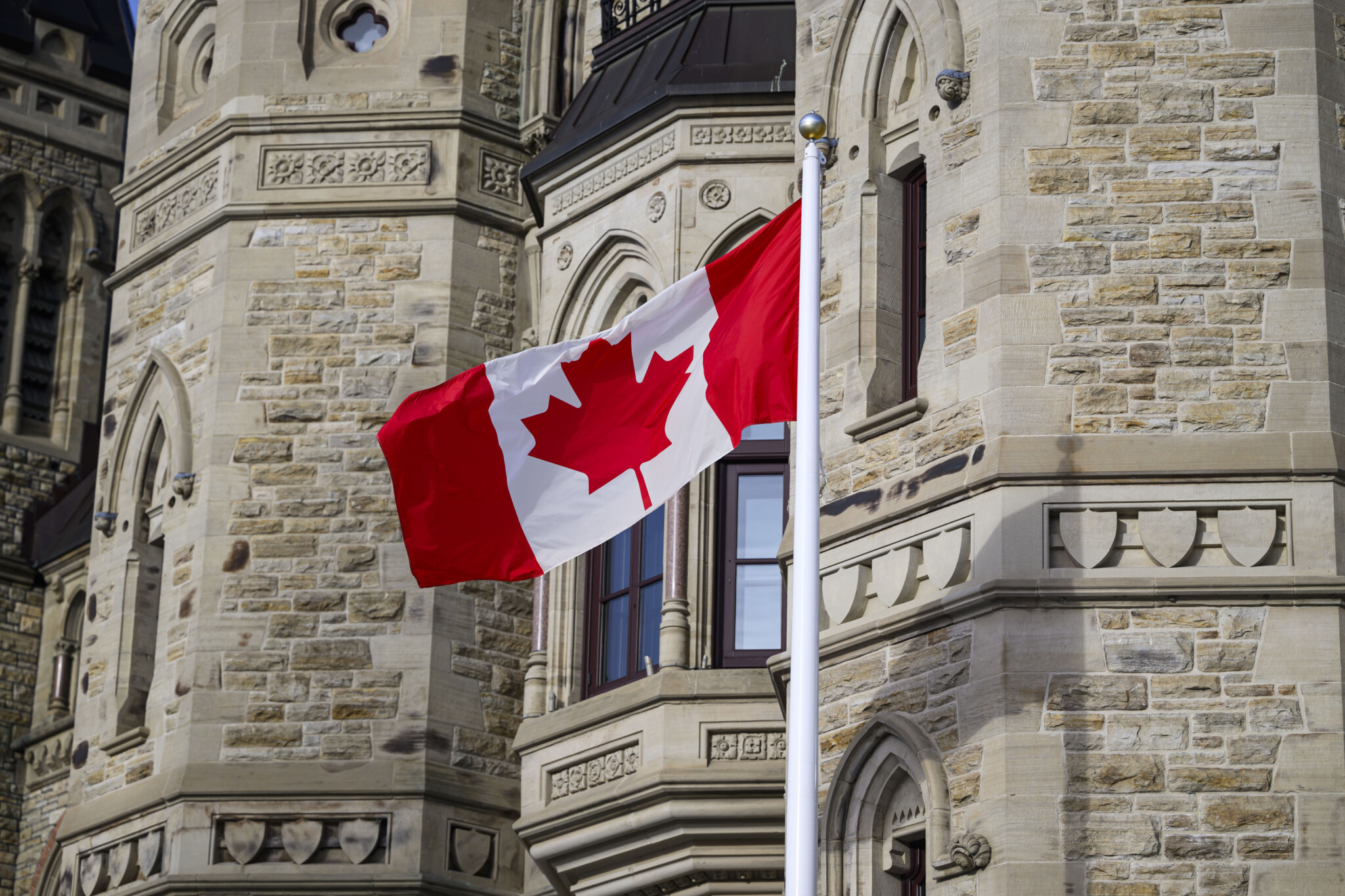DeepDives is a bi-weekly essay series exploring key issues related to the economy. The goal of the series is to provide Hub readers with original analysis of the economic trends and ideas that are shaping this high-stakes moment for Canadian productivity, prosperity, and economic well-being. The series features the writing of leading academics, area experts, and policy practitioners. The DeepDives series is made possible thanks to the ongoing support of the Centre for Civic Engagement.
In the upcoming fall federal budget, Prime Minister Carney is going to have some hard, perhaps impossible decisions to make. He has made big commitments to launch an economic transformation, including major national projects, increase Canada’s defence spending to 5 percent of GDP by 2035, and cut taxes for the middle class, all while committing to cut $28 billion in federal government operating expenditures.
No doubt, Canada’s federal fiscal position remains strong, with the lowest net-debt-to-GDP ratio in the G7 and a strong AAA consensus view from credit rating agencies. However, Canada’s strong position stems from active management, and achieving Carney’s various goals will require significant cuts.
As this prime minister knows well, the government machine is complex and various methodologies for cutting government costs have been tried from Prime Minister Jean Chretien and Finance Minister Paul Martin’s expenditure reviews in the 1990s, Prime Minister Stephen Harper’s departmental Deficit Reduction Action Plan (DRAP) in 2010, to Elon Musk’s recent slash and burn Department of Government Efficiency (DOGE) in the U.S. The Canada School of Public Service’s recent publication, documenting the past 50 years of spending reviews, is a treasure trove of lessons learned. Among them:
- The importance of mandate clarity: too big an agenda increases the risk of failure, as seen in the Nielsen review in the 1980s;
- citizen buy-in: public awareness is necessary for citizens to get behind the sacrifices asked of them;
- senior political leadership throughout the process: the inevitable political trade-offs require the cabinet, the prime minister and senior public servants to be active participants and get behind the plan; and
- broad, across-the-board cuts and freezes may reallocate some funding from lower to higher priorities, but can’t eliminate sizeable deficits and often have perverse effects.
Too often, spending reviews flit at the surface, are short-term, and target low-hanging cuts like the use of management consultants. But these will only go so far. As many political leaders have experienced, “finding waste” is hard, and passing the buck by assigning deputy ministers to achieve 5 percent departmental cuts often achieves little. Departments often play games by cutting the most politically sensitive programs first, like the RCMP musical rides program or Atlantic Canada’s small craft harbour programs, things no minister could ever agree to cut.
Furthermore, Carney’s goal with the appointment of Evan Solomon as AI minister and Joel Lightbound as minister for government transformation is to do just that: transform the government into a more effective, leaner, and modern state that is more reflective of the needs and desires of modern citizens. To achieve both, reducing operating expenditures and making government more effective, the government will need to build on the Chretien-Martin reviews of the 1990s and the Harper government’s Strategic Review (rather than DRAP). In both of these, the government set higher ambitions by thinking not just about spending efficiency but about the very functions of government.
“However, the goal of getting government right is not simply to save money. This initiative is animated by a much wider vision of the need to rethink and redesign…Our intention is that the process of reform will be shaped by an evolving vision of the role of the federal government in society, of its relationships with its key partners and the part which its public service should play.”
– Marcel Massé, remarks in the House of Commons on Program Review
“This budget will fundamentally reform what the federal government does and how it does it. That reform is structural—i.e. it will change permanently the way government operates. The objective is to get government right so that it can fulfil its social and economic mandates more effectively and sustainably.”
In reimagining the purpose of government today, it would be remiss not to talk about the role of modern technology in accelerating change—data integration, mobile services, cloud, and AI. However, what matters is not just technology itself, but rather the psychology and ethos of what the private sector technology world has achieved. While no ambitious transformation is devoid of pie-in-the-sky thinking, in real, practical terms, how could or should the government tackle its transformation to deliver the scale of spending reform needed?

Elon Musk flashes his shirt that reads “DOGE” at the White House in Washington, March 9, 2025. Jose Luis Magana/AP Photo.
Comparing and contrasting the private sector with government shows how the status quo is unsustainable
In today’s rapidly changing world, citizens are comparing and contrasting the present-day, technology-based private sector with their governments, and they are becoming increasingly frustrated.
Canada has over 200 ministries, agencies, and public bodies for the federal government alone, administering thousands of programs. Canada’s federal government, excluding provincial and local governments, has over five simultaneous but separate low-income family support programs, 10 simultaneous but separate disability programs and tax benefits, four different programs to help remote Indigenous communities transition away from diesel as their primary power source, and hundreds of science and innovation programs. These are just a few examples.
As governments have continued to expand, the bureaucratic apparatus has become more cumbersome, leading to the perception of excessive and endless administrative hurdles. The myriad of systems requires individuals to navigate complex overlapping webs of red tape, spending unreasonable amounts of time in long queues, whether physical or digital, just to accomplish simple tasks. The perception among citizens is that these legacy structures necessitate tax increases for services that don’t work. No wonder polling data has consistently shown an increasing number of people losing trust in governments to deliver.
The stagnation of governmental systems, which still rely on outdated processes, stands in stark contrast to the innovation and efficiency of the private sector. This is particularly true for today’s youth. Growing up with iPhones, Amazon, and Uber Eats, young people have become accustomed to a world where services have been turned on their heads and redesigned with the user at the centre.
Rather than walking to main street, the new technological world provides services at the tips of their fingers, with services brought to their doorstep. Young people wonder why it is possible to order a product and have it arrive within hours or navigate an unfamiliar city with ease using a smartphone app, yet engaging with government services often requires endless paperwork, waiting in long lines, or navigating cumbersome websites. As we have seen around the world, young people are increasingly expressing their dismay, swaying the outcomes of elections. This challenge facing governments is global and years in the making.
A reimagined, not just digitized, government
Technology can be a solution, but technology is not a panacea on its own—it is rather the psychology and the problem-solving ethos of the modern technology sector that should be embraced.
Because, let’s be clear, over the last three decades, governments have invested billions in technology, but it isn’t entirely clear if such investments have improved service delivery.
Despite the revolutions created by technology, broadly, government adoption of technology can be described as tech implementation from the inside-out—governments have largely taken existing programs, existing tax regimes, existing social programs, and digitized them—the digitization of existing internal government services out to citizens. Many online government portals remain merely digital mirrors of previous paper-based processes, maintaining redundancy and complexity that frustrate citizens.
The problem is not so much how our digitization efforts have been executed (which is also often faulty—see Phoenix Pay System), but about how the problem itself is conceived. The true genius of the technology sector’s innovators—and the potential future revolutionary and exponential opportunities created by AI—lies not just in the digitization of legacy systems but in their radical reimagining of how services can serve users more effectively, unencumbered by legacy structures.
Amazon did not merely digitize the traditional bookstore, its cash register, and a digital inventory of the books on its physical shelves; it fundamentally changed the shopping experience with the customer at its centre, now delivering billions of dollars of goods to people’s doorsteps every day.
Netflix didn’t simply digitize the ordering of video tapes; it revolutionized how viewers consume media by introducing a subscription model that allows for unlimited viewing, curated recommendations tailored to individual preferences, and now produces original content based on audience tastes.
Uber and Airbnb didn’t simply digitize existing taxi payment systems or digitize short-term lodging rental booking systems; they redefined transportation and travel by taking a user-centric approach that prioritizes convenience and cost. They built a system that connects riders with drivers, and property owners with travellers, fundamentally changing the way people think about personal travel and vehicle ownership.
To reduce operating costs but also transform the federal government to be leaner and more effective, this outside-in transformational spirit of innovation is the real path to change. Little reviews, slices, and dices here and there won’t drive fundamental change. Transforming the very role of government in the light of modern technology is required.
Reimagining the role of the state: where to start?
The PM and his fall budget process will undoubtedly be bombarded with big needs: new program proposals, unhappy citizens, trade disputes and chronic underfunding of healthcare, defence, etc. The last thing needed is an undeliverable, politically controversial, pie-in-the-sky proposal. But Carney has made clear, finding savings in the operational budget of the federal government is not just a political campaign promise, it is a critical requirement for the country to balance its other investment needs.
So, where to start? Here are four recommendations for the fall federal budget:
1. Establish a Transformation Unit: Launch a new but significant federal spending review process by creating a new, small, empowered Transformation Unit connected to the Prime Minister’s Office (PMO) and Privy Council Office (PCO)—but segment it out of the normal governmental decision-making process.
The Transformation Unit should be tasked with one clear, singular mandate to truly transform and reimagine fundamental government functions to improve operational efficiency.
To do this work, the unit cannot effect true transformation if it is part of the government’s daily decision-making; thus, it must be separated, segmented, and protected from everyday machinations.
By the nature of such transformations, it must be able to operate cross-departmentally; thus, the unit must have direct access to the prime minister on a regular basis. Importantly, the unit cannot just report to the PCO.
While separate from the normal flow of day-to-day decision making, the PM must maintain a regular connection with the unit’s major deliberations and subsequent actions. True transformation will inevitably require tough political choices with real winners and losers, and a willingness to expend political capital.
The PCO cannot make those decisions. Transformation will require deft handling of the politics, which will absolutely require the backing of the highest bodies of political leadership. The unit must be granted the authority to be bold and visionary and empowered to make change. If no one in the machinery of government believes the unit is empowered to make such a change, departments will never provide it with the data or information it needs to succeed. Reporting regularly and directly to the prime minister, and that the prime minister will intervene to ensure accountability, will ensure cooperation.

A Canadian flag flies in front of the offices of the Prime Minister in West Block on Parliament Hill in Ottawa, on Wednesday, Jan. 22, 2025. Justin Tang/The Canadian Press.
2. Separate services versus functions: Don’t have the Transformation Unit start with tearing down or reforming individual existing government services (inside-out). Give it direction and a mandate to start with the major functions and outcomes that the government seeks to transform (outside-in).
What does this mean to start with functions and outcomes rather than services? For example, it means don’t start with the inside-out examination or digitization of individual low-income family income supplements, low-income school lunch programs, or low-income tax credits, but start with the function and outcome—to lower the number of low-income families. The government has the cumulative data of each beneficiary—start here with the low-income family at the centre of a transformational redesign.
If Google and Netflix can design customized services using data, with the many points of government data from service utilization to tax data, there is no reason why the government could not design a single, integrated program that is adaptable to each family’s differing circumstances and radically simplify programs into an accessible, mobile service.
Rather than digitizing the Indigenous Off-Diesel Initiative, the Northern REACHE program, the Indigenous Led Clean Fuels program, and Canada’s Clean Energy for Rural and Remote Communities program (why do we have four separate programs?), start with the objective of helping Indigenous communities get off diesel power systems, and how the function could be achieved through radically simplified approaches that reduce administrative waste. Rather than make Indigenous communities hire armies of consultants to apply to a multitude of programs costing everyone millions, AI could be trained to make customized first-pass design proposals for renewable-battery storage proposals or transmission connectivity for each community, consistent with federal government program parameters. Like an auto-populated tax form, these proposals could serve as a first consultative document to kickstart the paths to transformation, under a single integrated funding program, simplifying the decision process for Indigenous communities.
It means not starting with how technology can transform each individual federal science and innovation program (of which there are hundreds across more than 10 departments, agencies, and Crown organizations), but rather starting with the function—increasing innovation and the development of Canadian IP.
How can Canada use technology to enhance innovation in a simplified and more effective framework? Similarly, Canada must do more to build a more effective business investment environment, instead of providing more funding to innovate the individual business programs of Industry Canada, Natural Resources Canada, Agriculture Canada, Export Development Canada, and Business Development Canada, each of them with multitudes of different, often overlapping programs—ask the question: are they all necessary?
Why, for example, is it necessary to have a differentiated EDC and BDC? Or can we reconceptualize a more comprehensive program framework, or even a departmental and agency framework, to support economic development? AI could be used to identify all of the federal programs supporting science, innovation, and business investment across the multitude of government departments and agencies, and group similar programs into clusters for integration based on purpose and stage of development.
Some of the hallmarks of the Chretien-Martin program reviews and the Harper government’s strategic reviews were machinery of government changes—a reshaping of the purpose of government, not just efficiency cuts across various departments. Only by questioning the fundamental role of Canada’s federal government and reimagining its approach can we truly restructure Canada’s operating paradigm.
Per the lessons learned from previous spending reviews, start the unit with a few key functions and outcomes to focus efforts—too many risks encumbering the unit with too much internal management and too few resources to achieve them. Over time, the number of functions and outcomes can be increased.
3. Hire an outsider: The head of the Transformation Unit cannot be a senior public servant or a political advisor. Hire the best from the private sector, i.e., those who have experience radically reimagining functions
To undertake such transformations will require true experts who understand the transformational potential of technology, unencumbered by legacy systems. Civil servants are extremely dedicated and hard-working, but they typically do not have experience with truly out-of-the-box innovation and risk-taking transformation. Further, senior civil servants will have ties to their civil service compatriots, and will be reticent to upset the applecart and limit their internal career paths, making them unobjective transformation agents. Political staff will be viewed cynically, nor will they possess the true, technical, and real-world experience of leading technology transformations that affect millions.
Hire from the global talent pool. Bring in truly imaginative innovators with new perspectives to reimagine your government’s biggest functions from the outside in.
4. Involve the civil service: Pair your external innovative thinkers in your Transformation Unit with politically savvy advisors and innovative senior government officials
While the unit’s leadership should be from the outside, they will need help to navigate the machinery of government. Innovative thinkers will conceive of big, transformational ideas, but such ideas will go nowhere if they do not understand sensitive political dynamics and how to navigate the political, legal, and governance systems required to make them real. A good idea is ultimately a dud if it can’t be implemented. Without good, politically savvy advisors paired with the unit’s lead, it would be doomed to fail.
As a comparison, the Chretien-Martin program review appointed a steering committee of the most experienced deputy ministers and a special cabinet committee of ministers to vet proposals, build political consensus, and unify public communications for review by the prime minister.

The Canadian government’s Competition Bureau website is pictures on a mobile phone and laptop screen in Ottawa on Monday, Oct. 2, 2023. Sean Kilpatrick/The Canadian Press.
The reimagined state: to what end?
What could be the vision at the end of the rainbow? While some functions, such as national defence, will remain, over time, function by function, role by role, imagine a government redefined to “government as App Store.” For future generations, rather than driving to the mall to renew a passport or apply for unemployment, or line up in a hospital to receive care, a reimagined government will exist at their fingertips with more and more services brought to their digital doorstep.
Imagine a “government as App Store” where apps and services will replace rigid, legacy departments and agencies. Citizens would have direct access to services on the move or in their homes—health care, education, business registration, passports, immigration, taxation, support programs. Services as “apps” can continually innovate, interact, and use integrated data to improve. Poorly designed service apps will die out, well-designed services and apps will thrive, voted on by citizen usage rather than live in hidden corners of departmental plans and priorities. Transformation can include an almost built-in, self-regulating digital Program Spending Review, voted on by citizens, and outcomes.
In doing such a transformation, there will inevitably be many eggs broken and milk spilled. Many services and departments will be overhauled, and jobs will be lost. In the U.S., Elon Musk’s DOGE imagined the use of technology to reimagine the U.S. government, and while the intent was good, DOGE’s execution failed to learn the lessons of the past: too broad a mandate, too much focus on politically driven perceptions of waste, and failure to bring the public onside.
No doubt, any effort to find real program savings and to reimagine the role of the federal government will look to many like a DOGE. But in addressing functions and most importantly, outcomes for people, the government can insulate itself from accusations of mindless cuts. The unit, as “DOGE with a heart,” may cut some jobs, but the result would be services that are more accessible and efficient, with citizens at the centre of its design—something imminently defensible for political leaders.










